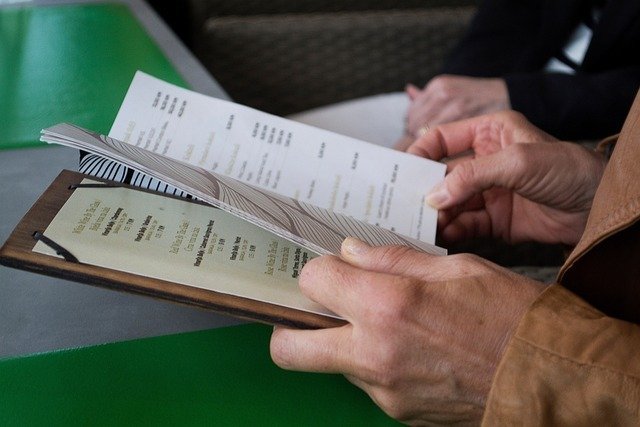Business
What Makes The Most Resilient Materials For Restaurant Menus? Key Considerations

Image by StockSnap from Pixabay
In the bustling environment of a restaurant, menus are constantly exposed to handling, spills, and environmental wear and tear. For restaurateurs, investing in resilient menu materials is essential to maintain a professional appearance, enhance durability, and minimize replacement costs. This article lists the key considerations for selecting the most durable materials for restaurant menus.
Durability and Resistance to Wear
Menus are frequently handled, which makes durability a top priority. Materials like laminated paper, synthetic paper, and rigid plastics offer excellent resistance to tearing, creasing, and other physical damage. Lamination, for example, not only protects against spills but also reinforces the paper to prevent quick deterioration.
Water and Stain Resistance
Given the high likelihood of spills in a dining setting, water-resistant materials are essential. Waterproof synthetic papers, coated with protective layers, prevent liquids from seeping into the material. Additionally, stain-resistant coatings help menus withstand grease and food stains, maintaining a clean and professional look over time.
Ease of Cleaning
Menus should be easy to sanitize, especially in the post-pandemic era where hygiene is paramount. Materials like PVC, polyester, and laminated options allow for quick and thorough cleaning with sanitizing wipes or mild detergents without degrading the surface. This ensures that menus remain hygienic and presentable after repeated cleanings.
Aesthetic Appeal
While durability is crucial, the aesthetic appeal of a menu also impacts the dining experience. High-quality synthetic materials can replicate the look and feel of traditional paper or even leather, offering a sophisticated and professional presentation. Custom printing options can also enhance brand identity through vibrant colors and sharp graphics.
Environmental Considerations
Sustainability is becoming increasingly important in material selection. Recyclable or eco-friendly options like biodegradable plastics or FSC-certified paper align with environmentally conscious business practices. Restaurateurs can further minimize their environmental impact by choosing durable materials that reduce the frequency of replacements.
Innovative Material Options
For restaurateurs seeking cutting-edge solutions, materials like Aquazol 500 offer unique benefits. Aquazol 500 is a water-soluble polymer that is known for its excellent durability and versatility. It goes into making films and coatings that can then end up as coatings on restaurant menus. It also helps to provide superior resistance to environmental wear, making it ideal for menu applications that demand longevity and resilience. Its ease of application and environmentally friendly properties further enhance its appeal for sustainable dining establishments.
Cost vs. Longevity
While more resilient materials might come with a higher upfront cost, they typically offer better long-term value. Durable materials reduce the need for frequent replacements and can withstand harsh restaurant conditions, ensuring that the menus look pristine for longer periods. This cost-benefit analysis is vital for making informed investment decisions.
Summing It All Up
Selecting the right materials for restaurant menus involves balancing durability, aesthetics, ease of maintenance, and environmental impact. By understanding the key properties of durable materials, restaurateurs can ensure their menus remain a lasting and attractive feature of the dining experience. Ultimately, investing in resilient materials not only enhances presentation but also contributes to operational efficiency and sustainability.
-

 Quotes3 years ago
Quotes3 years ago53 Motivational Gym Quotes to Fuel Your Workout
-

 Quotes10 years ago
Quotes10 years ago50 Most Powerful Quotes Ever Spoken
-

 Motivation5 years ago
Motivation5 years ago4 Fun New Hobbies To Try This Year
-

 Quotes1 year ago
Quotes1 year ago100 Motivational Quotes to Inspire You in 2025
-

 Quotes2 years ago
Quotes2 years ago43 Inspirational Quotes About Thoughts
-

 Quotes3 years ago
Quotes3 years ago105 Motivational Quotes by Famous People
-

 Education12 months ago
Education12 months agoHow to Motivate Yourself to Study: 6 Proven Techniques
-

 Quotes1 year ago
Quotes1 year ago77 Morning Motivational Quotes to Kickstart Your Day
































